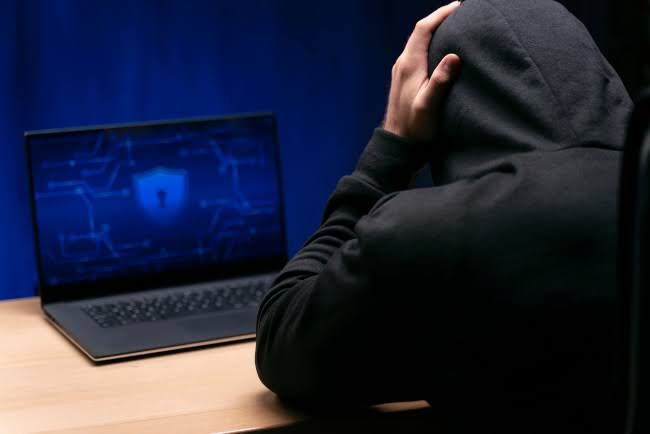The Internet is a space where we share information daily. Social networks, forms, online purchases… Each action leaves a slight digital trace. Most of the time, we are unaware of how much we reveal about ourselves. This is where an increasingly well-known (and feared) concept comes into play: doxing.
What is doxing, and why should you care?
Doxing (abbreviation of dropping dox or ‘release documents’) refers to the public exposure of a person’s data without their consent. We talk about addresses, telephone numbers, workplaces, private photos, emails, real names, and even financial or family information.
These types of attacks, which initially emerged in particular online communities, have spread in recent years and can have serious consequences: from harassment, threats, and identity theft, to the loss of employment or the appearance of legal problems.
Doxing on the Internet is not a simple hacker’s game:It is a form of digital violence. And it can affect anyone.
Qondar: a solution that helps you protect your digital privacy
Before continuing, it is worth stopping at our featured tool: Qondar, a solution for personal cyber surveillance.
Qondar has been developed for anyone who wants to maintain control over their information on the network without needing advanced technical knowledge. It works like a Continuous Threat Exposure Management (CTEM) platform. It lets you detect if your data is being shared without permission in forums, leaked databases, social networks, or even the dark web.
Even if you don’t know what doxing on the internet is, you too may suffer from an attack. If so, Qondar will tell you before it’s too late.
Why does someone decide to dox another person?
There is no single attacker profile, nor a single motivation. Doxing, as this phenomenon is also known, can have many faces:
- Personal revenge: Ex-partners, ex-friends, or work conflicts can lead to malicious leaks.
- Extreme ideology or activism: Some users publish data about opponents to intimidate or silence them in political or social debates.
- Practical jokes or viral challenges: especially among teenagers or in toxic online communities.
- Extortion and blackmail: Once they have your data, some attackers try to obtain money or favors in exchange for not disclosing it.
Whatever the reason, the result is the same: your privacy and security are compromised.

What type of data is typically exposed when doxing?
Although the degree of exposure varies, the most common data that is published or sold in doxing cases are:
- Full name and physical address
- Phone number
- Profiles on social networks
- Personal photos
- Information about the family environment
- Employment or academic data
- Purchase or search history
A simple search in filtered databases (such as those found on the dark web) can be enough to create a detailed profile of a person. That’s why prevention is key.
How to avoid being doxed: good practices to protect your privacy
To know how to protect yourself from doxing involves changing certain digital habits.. Here are some practical tips that you can start applying today, now that you understand what doxing is:
1. Check your social networks
- Use strict privacy settings.
- Avoid sharing personal information such as your address or your children’s school.
- Do not post photos of documents or screenshots with sensitive data.
You may be interested→ 5 security strategies on social networks.
2. Use strong and unique passwords
- Don’t repeat passwords across multiple services.
- Enable two-step authentication (2FA) whenever possible.
3. Be careful with online forms and contests
- Do you need to give out your phone number to enter that giveaway?
- Use secondary or temporary emails when possible.
4. Avoid heated discussions in public forums
- Many victims of doxing end up being attacked for their opinions.
- Participate respectfully and avoid sharing unnecessary details.
5. Do searches about yourself
- Type your first and last name in search engines to see what appears.
- Use tools like Qondar to get a complete view of your online exposure and receive alerts if anything changes.
What do you do if you have been doxed?
It may finally happen even if you have done everything possible to avoid being doxed. In this case, the most important thing is to act quickly:
- Document everything that has been published (captures, links, etc.).
- Contact the platforms where the information has been disclosed and request immediate withdrawal.
- Report the case to the Police and authorities, especially if there are threats or blackmail.
- Go to your national Data Protection Agency if your rights have been violated.
- Receive psychological support if the emotional impact has been substantial. Digital bullying can seriously affect mental health.
Is there a definitive solution?
The reality is that there is no 100% foolproof barrier. But yes, you can minimize your exposure and protect yourself from doxing to be prepared for any threat.
This is where Continuous Threat Exposure Management (CTEM) solutions, like Qondar, come into play. This tool offers you something that few solutions provide: active and personalized digital identity monitoring.
Knowing when and where your information appears allows you to act before it’s too late. What is not controlled on the Internet can get out of hand in seconds.
Now that you know what doxing is, it is not a distant concept exclusive to celebrities or public figures. Anyone can be a victim. And in a society as hyperconnected as the current one, shielding our personal information has become a necessity, not a luxury.
Luckily, there are tools available to everyone to avoid this. If you are looking for an effective way to protect yourself from doxing and keep your digital identity under control, Qondar by Enthec is a solution that can help you sleep more peacefully.
Your privacy is not a simple detail to consider; it is part of your security. Start caring for her today with Qondar.


